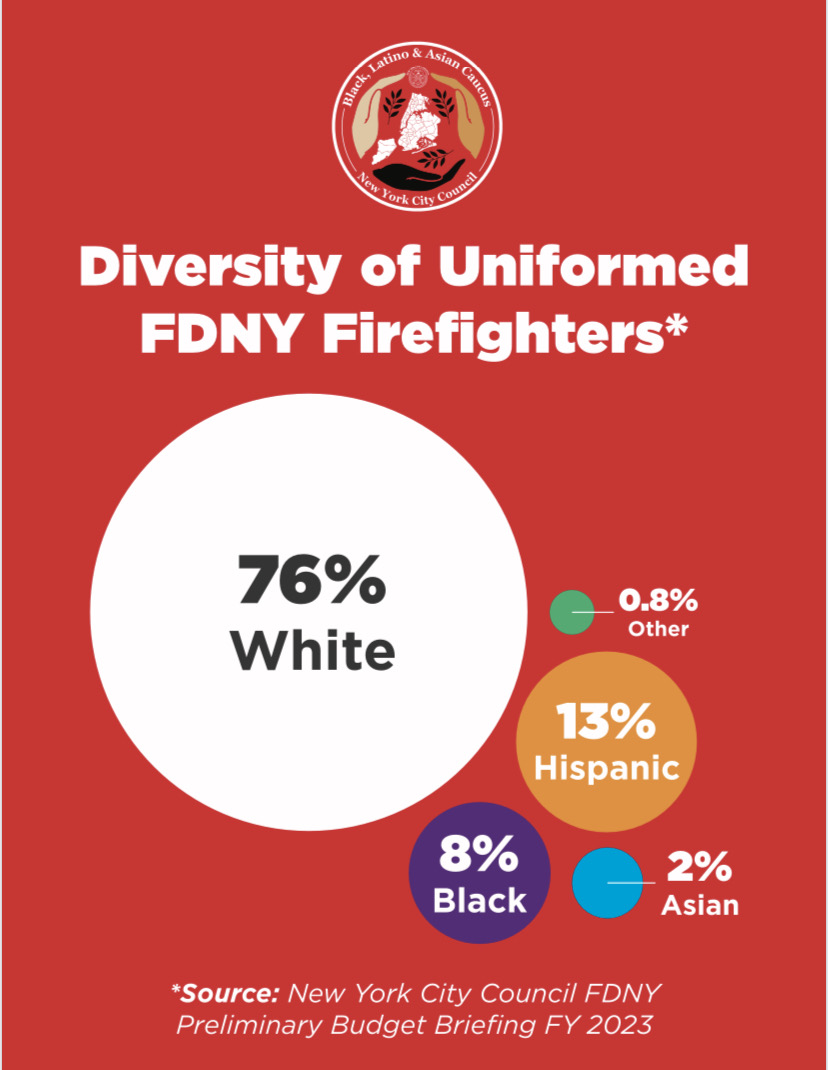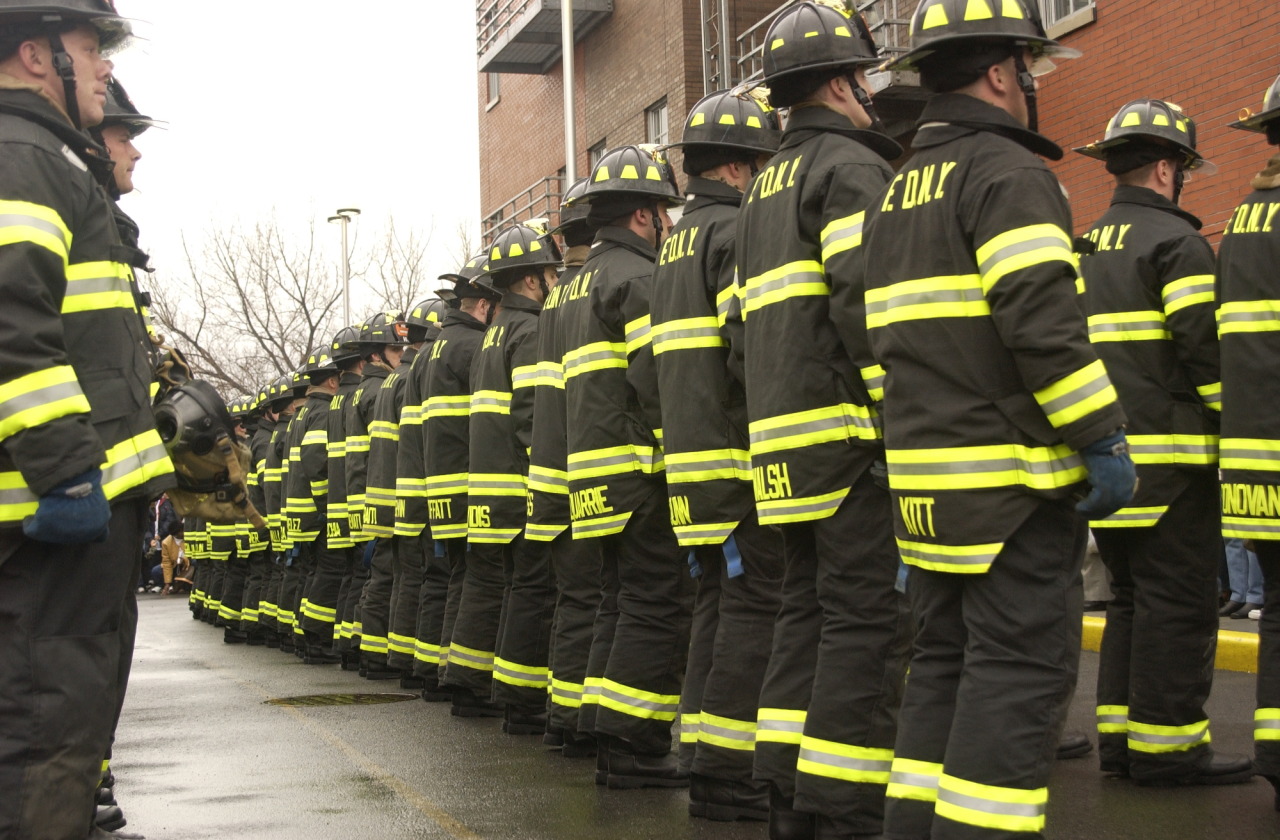On September 19, 2022, the Committee on Fire and Emergency Management, chaired by Council Member Joann Ariola, held an oversight hearing entitled “Evaluating Diversity and Inclusion in the FDNY.” The hearing was a follow-up on what the Department has accomplished regarding their plans to increase diversity, as well exploring the historical culture of harassment and discrimination of women and minorities in the Department. Additionally, a discussion on a package of several bills related to improving the culture for women and minorities in fire houses, and diversity in the Department.
In response to a 2018 Council inquiry, on file with Committee staff, the FDNY provided the following projections for diversity in the coming years: “If [FDNY] continue[s] to diversify at the same rate as today, and rates of retirement and hiring remain the same, [the Department] would see the population of the FDNY reaching the same diversity as New York City over the next 3-4 testing cycles. In that same period, we would expect female candidates to be over 10% of the FDNY force, 3 points above the national average of 7%”. The Council’s data team evaluated whether current hiring trends are in line with such goal, and what hiring trends would be necessary in order to meet the diversity goal.
They found that:
- While current hiring trends will improve firefighter racial and ethnic composition, it’s not projected to reach NYC’s demographics within the next 15 years.
- At the recruitment stage of hiring, more Asian applicants are needed. At the graduation stage, more graduates from all underrepresented groups are needed.
2020
Firefighters
8,091
Under-represented
Graduates
Asian: 4.4%, Female: 3.6%
Comparing Gender and Race/Ethnicity
When looking at gender, 52% of the population is female and 48% male in NYC. On the other hand, less than 2% of firefighters are female at the FDNY. When looking at race/ethnicity, all groups make between 15% to 29% of the NYC population. While at the FDNY, about half of all firefighters are white (54%) and the rest of the groups make up smaller proportions (23% other/unknown, 13% hispanic, 7% black, and less than 2% asian).
Uniformed Firefighters 2023

Current Applicant & Graduate Demographics
Applicant Rates
*Dashed lines represent NYC demographic distribution, solid lines represent projected trend.
Graduate Rates
*Dashed lines represent NYC demographic distribution, solid lines represent projected trend.
Becoming a Firefighter
Background on the FDNY’s Hiring Process
Demographics at Each Stage of the Hiring Process
The table to the right aims to see at what stages of the recruitment process do underrepresented groups fail to move on to the next stage. After the initial application, the percentage is out of the total number of applicants that moved on to the next round from the preceding step. For example, there were 3,341 applicants in the 2017 exam that were Asian. Of those, 61% preceded to the next step of taking the exam. Of those 61%, 95% passed the computer exam. Of those 95%, 19% were invited to take the physical exam, and so on so forth.
One stage where diversity efforts can be targeted is where applicants take the physical exam after being invited to take it. Only 42% of female applicants take the exam after being invited to take it. All other population groups are much closer to the total rate of applicants who take the exam after being invited of 71%.
Reaching Desired Targets
Race/Ethnicity
- Hispanic : 33.8%
- Black : 25.4%
- White: 23.3%
- Asian : 18.3%
- Other/Unknown : -0.86%
Gender
- Male : 87.5%
- Female : 12.5%
- Other/Unknown : -0.08%
Introduced Legislation
- Amending the administrative code of the city of New York, in relation to demographic diversity within the fire department. Int. 516
- Requiring permanent firehouse facility upgrades to ensure a safe working environment for a mixed gender workforce. Int. 519
- Reporting demographic information of members of the fire department at firehouses. Int. 552
- Requiring the fire department to implement training on diversity, inclusion, and harassment. Int. 553
- Requiring the fire department to annually report on equal employment opportunity complaints. Int. 560
For feedback, comments, and questions please email DataInfo@council.nyc.gov.
Created by the NYC City Council Data Team.

